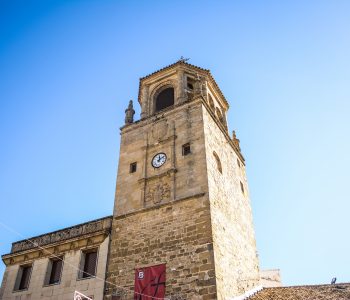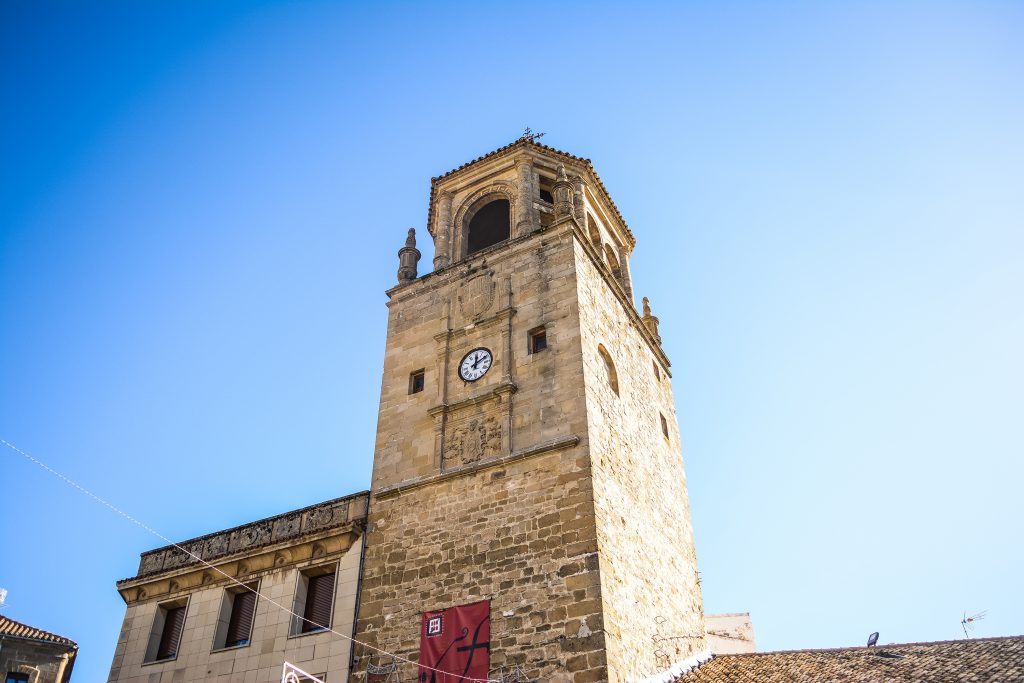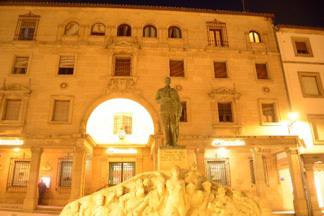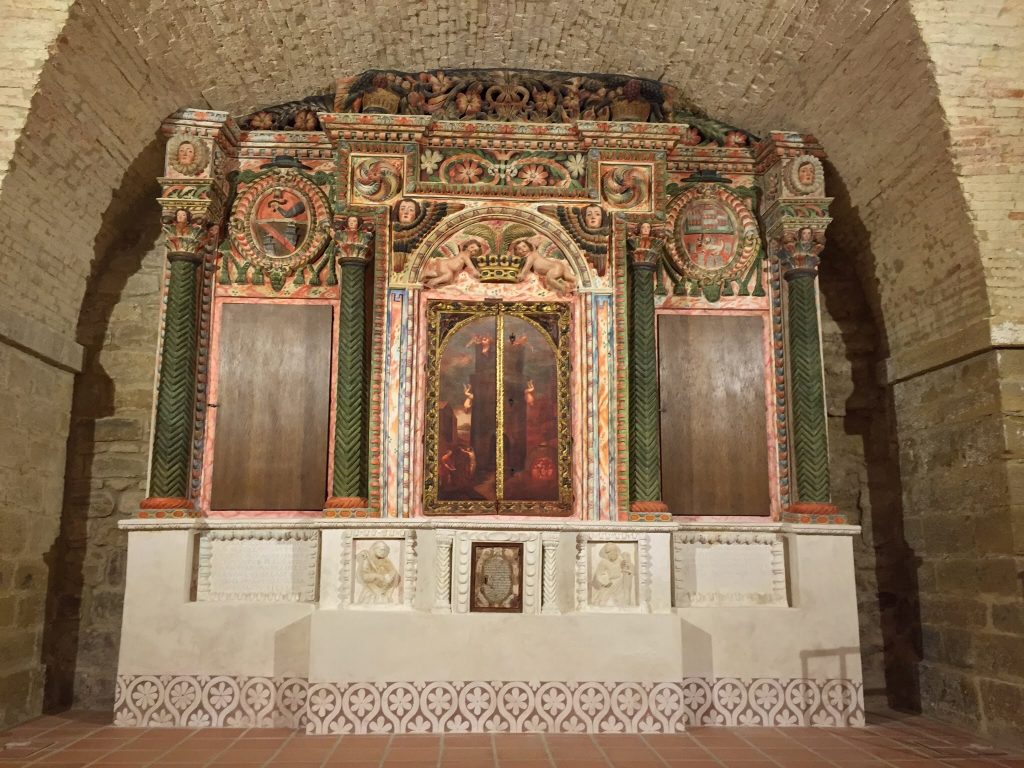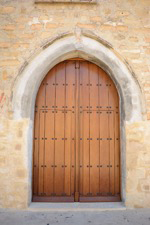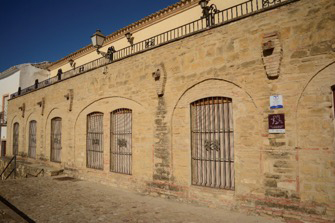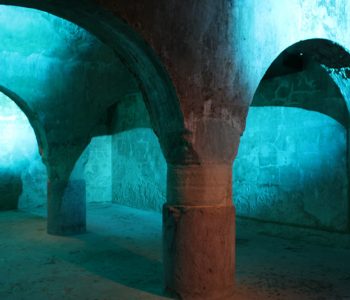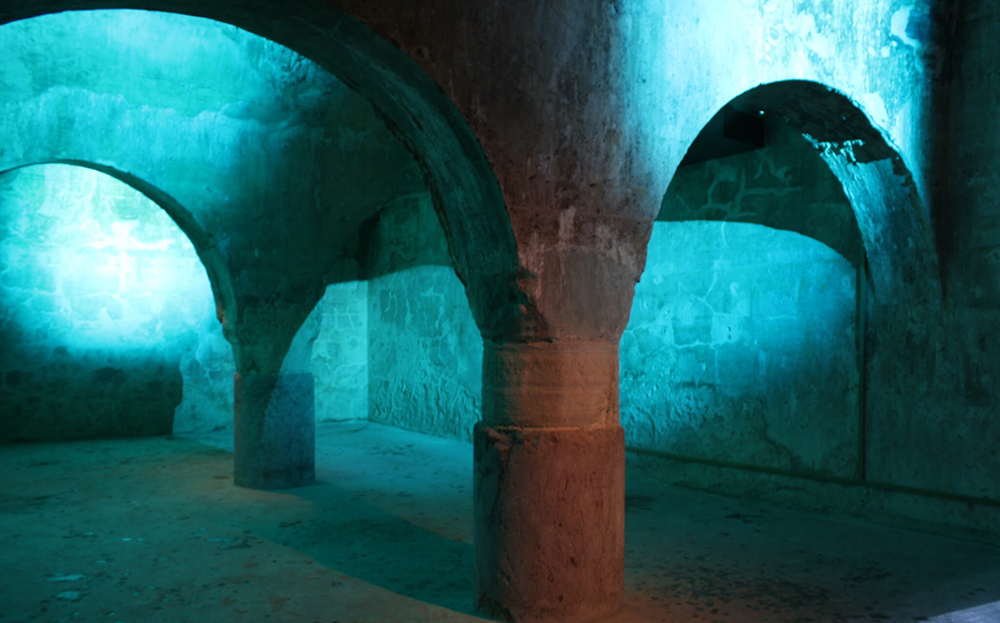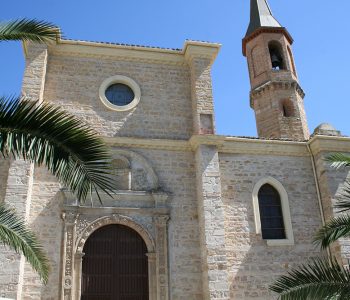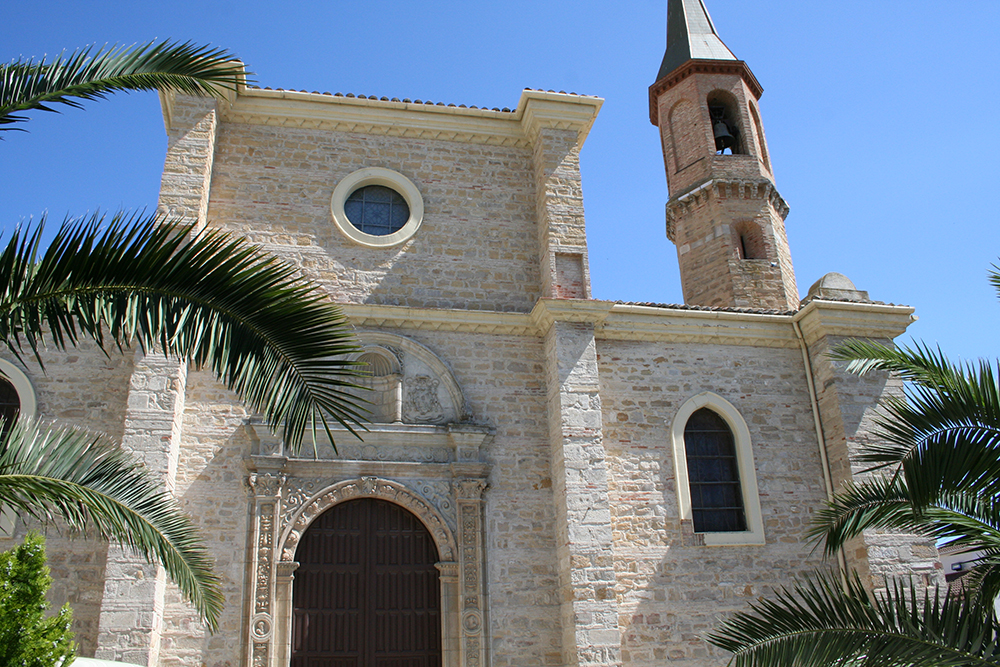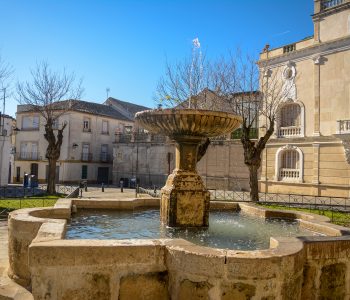
Palace of the Orozco
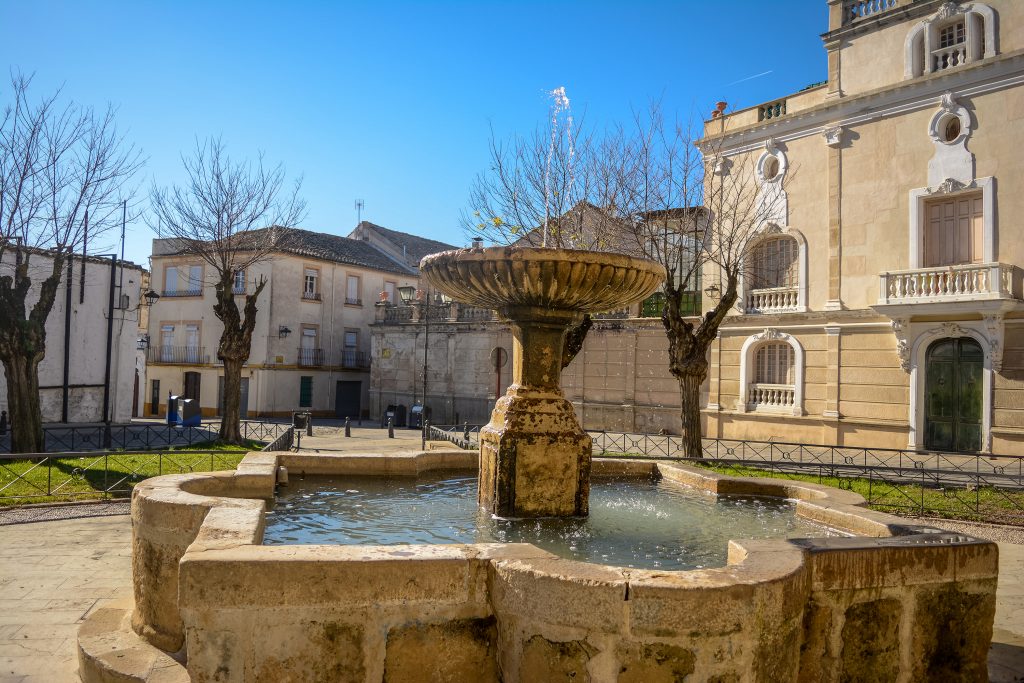
Strolling around, we approach the Plaza de San Pedro, where the Palacio de los Orozco is located, the only example in Úbeda of 19th century palatial architecture, with French influence and modernist touches. The Palacio de los Orozco is one of the settings where Antonio Muñoz Molina develops the action of his novel Beatus Ille in Mágina.
“The palace is older than the acacias and hedges, but the fountain was already there when they built it, brought from Italy four centuries ago by a duke who was very devoted to Michelangelo […]”
Antonio Muñoz Molina. Beatus Ille.
